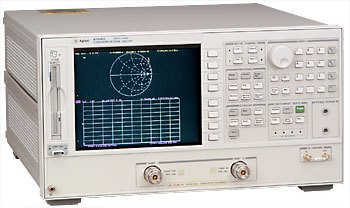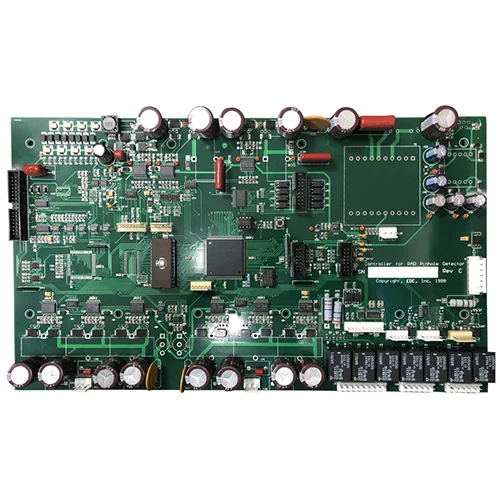Instrumentation Prototype PCB Assembly
Name: Instrumentation Prototype PCB Assembly
Number of SMT lines: 7 high-speed SMT patch supporting production lines
SMT daily production capacity: more than 30 million points
Testing Equipment: X-RAY Tester, First Piece Tester, AOI Automatic Optical Tester, ICT Tester, BGA Rework Station
Placement speed: CHIP component placement speed (at best conditions) 0.036 S/piece
The smallest package that can be attached: 0201, the accuracy can reach ±0.04mm
Minimum device accuracy: PLCC, QFP, BGA, CSP and other devices can be mounted, and the pin spacing can reach ±0.04mm
IC type patch accuracy: it has a high level for mounting ultra-thin PCB boards, flexible PCB boards, gold fingers, etc. Can be mounted/inserted/mixed TFT display driver board, mobile phone motherboard, battery protection circuit and other difficult products
Fundamental contents
There are many types of electronic instruments, and the classification methods are also different.
According to structure and use
1. Indicator instrument
The indicating instrument is a direct-reading instrument. Since the indicating instrument can directly read the measurement result through the deflection angle displacement of the pointer, it is the most widely used electronic instrument. Various AC and DC voltmeters, ammeters and multimeters, etc., are mostly indicating instruments.
2. Totalizing instrument
Integrating instruments are used to measure quantities related to practice, that is, within a certain period of measurement practice, the instrument accumulates the measured value. For example, a watt-hour meter is a kind of integrating instrument used to measure electric energy.
3. Comparing instrument
A comparison meter is an instrument that uses a comparative method to measure. It is divided into two types of DC instruments and AC instruments. The most commonly used instruments in bridge and potentiometric time comparison instruments.
4. Recording instrument and oscilloscope
A recording instrument is an instrument that continuously records the functional relationship between the measured value and another variable. Such as x-y recorder, etc.
5. Digital instrument
A digital meter is a meter that uses a logic circuit to digitally display the measured size. Because of its high sensitivity, fast measurement speed, clear and intuitive display, convenient operation, strong anti-interference ability, etc., the development of digital instruments is very fast, and there are more and more types. The common ones are digital voltmeter, digital frequency meter, digital multimeter and so on.
6. Extended range device
The range expansion device is a device used to expand the measurement range of electronic instruments, including shunts, additional resistors, and measuring transformers.
7. Calibration device
According to a certain measurement method and circuit, a combination of some standard instruments, measuring devices and auxiliary equipment becomes a calibration device. It is used to calibrate commonly used electronic instruments, mainly including indicating instrument calibration devices, watt-hour meter calibration devices, etc.
According to the working principle
According to the working principle, electronic instruments can be divided into the following types: magnetoelectric electronic instruments, electromagnetic electronic instruments, electric electronic instruments, induction electronic instruments, electrostatic electronic instruments, electronic electronic instruments and finishing electronic instruments.
According to the measurement object
Electronic instruments can be divided into voltmeters, ammeters, power meters, frequency meters, etc. according to different measurement objects.
According to the working current
Electronic instruments can be divided into DC instruments, AC instruments and AC-DC dual-purpose instruments according to the type of working current.
According to the accuracy level
According to my country's national standard GB776-76 "General Technical Conditions for Electrical Measuring and Indicating Instruments", the accuracy level is divided into seven levels, namely 0.1, 0.2, 0.5, 1.0, 1.5, 2.5, 5.0. The last level of accuracy in my country's old standards is level 4.0, so there are both level 5.0 and level 4.0 in the existing instrument products.
According to the way of use
Electronic instruments can be divided into installed instruments and portable instruments according to the way of use. Mounted instruments are usually fixedly installed on the panel of the switchboard or electrical device screen (cabinet), and their accuracy level is low, but generally they have strong overload capacity and low cost. Portable instruments are easy to carry and easy to use. Generally, they can be used indoors and outdoors in various occasions. They have high accuracy, but poor overload capacity and high cost.
According to the conditions of use and the use of the environment
Electronic instruments can be divided into five groups: A, A1, B, B1, and C according to the conditions of use and the environment in which they are used.
Classification according to the performance of protection against external magnetic or electric fields
Electronic instruments are divided into four grades: Ⅰ, Ⅱ, Ⅲ, and Ⅳ according to the performance of protecting against external magnetic or electric fields. Under the influence of external magnetic field or external electric field, the deviation between the indicated value and the actual value of class I instrument is allowed to be no more than ±0.5%; the allowable deviation of class II instrument is ±1.0%; the allowable deviation of class III instrument is ±2.5%; the allowable deviation of class IV instrument is ± 5.0%.
According to the protective performance of the shell
According to the protective performance of the shell, electronic instruments can be divided into seven types: ordinary type, dust-proof type, splash-proof type, waterproof type, watertight type, and explosion-proof type. Among them, the ordinary shell structure should be able to protect the measuring mechanism or working part of the instrument and accessories from dirt and insects and prevent mechanical damage, and heat dissipation holes are allowed on the shell; the dust-proof shell should be able to prevent dust from entering the shell; The splash type enclosure shall be able to prevent rainwater from splashing into the enclosure; the flameproof enclosure shall be able to prevent internal sparks from spreading to the space outside the enclosure.
We Provide Instrumentation Prototype PCB Assembly, SMT patch, Prototype PCB Assembly services. Kingford is your one-stop Turnkey PCB Assembly factory.

Name: Instrumentation Prototype PCB Assembly
Number of SMT lines: 7 high-speed SMT patch supporting production lines
SMT daily production capacity: more than 30 million points
Testing Equipment: X-RAY Tester, First Piece Tester, AOI Automatic Optical Tester, ICT Tester, BGA Rework Station
Placement speed: CHIP component placement speed (at best conditions) 0.036 S/piece
The smallest package that can be attached: 0201, the accuracy can reach ±0.04mm
Minimum device accuracy: PLCC, QFP, BGA, CSP and other devices can be mounted, and the pin spacing can reach ±0.04mm
IC type patch accuracy: it has a high level for mounting ultra-thin PCB boards, flexible PCB boards, gold fingers, etc. Can be mounted/inserted/mixed TFT display driver board, mobile phone motherboard, battery protection circuit and other difficult products





